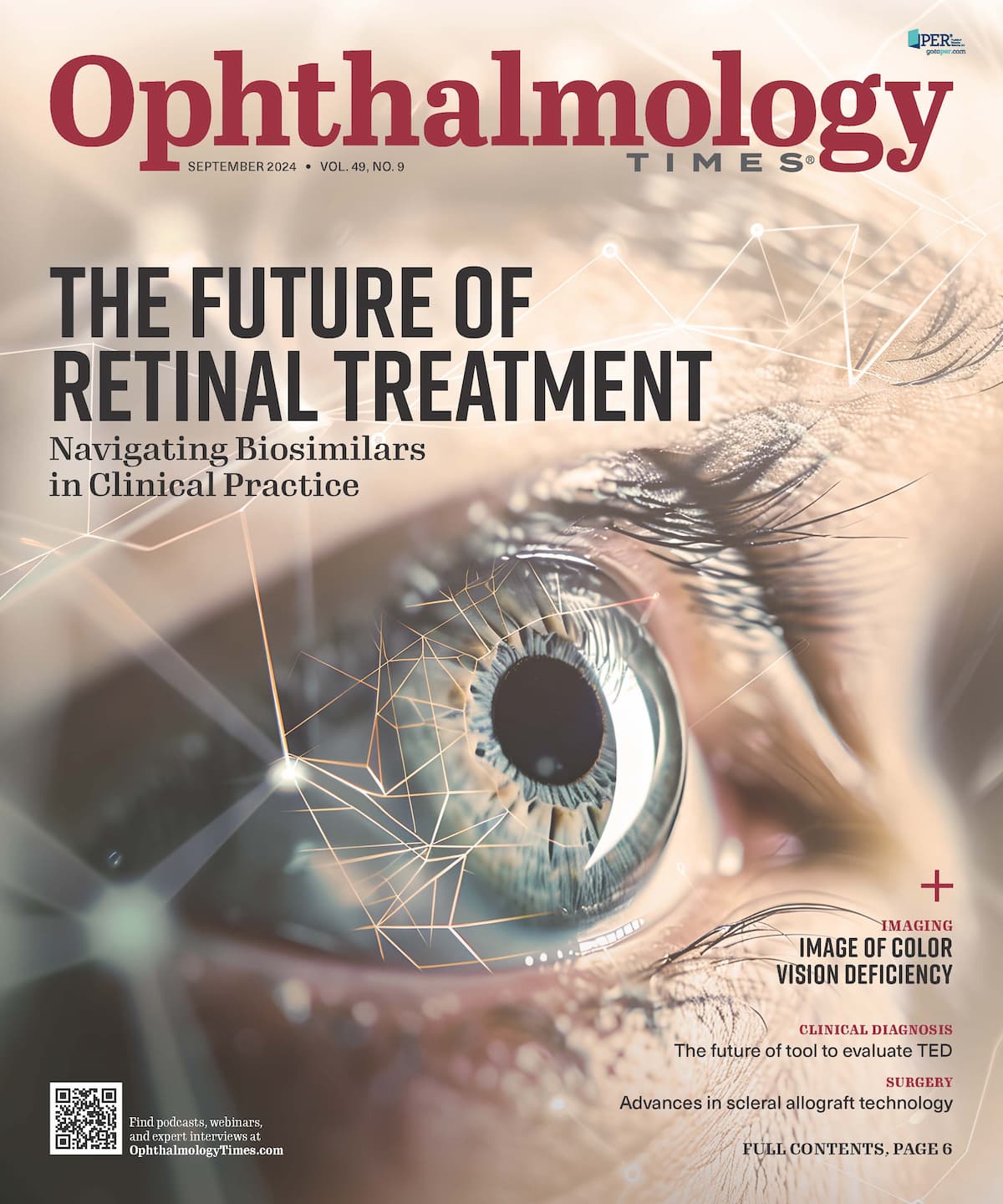Publication
Article
Digital Edition
Researchers find color vision deficiency may impact choroidal diagnosis
Author(s):
CVD could impact physicians' ability to identify choroidal melanoma from choroidal nevus.
(Image Credit: AdobeStock/Keith Frith)

A team of international investigators has found that color vision deficiency (CVD) may interfere with an eye care provider’s ability to differentiate between choroidal melanoma and choroidal nevus.1
Yacoub A. Yousef, MD, is the first study author and an ocular oncologist in the Department of Surgery (Ophthalmology), King Hussein Cancer Center, Amman, Jordan.
Color blindness is not an uncommon phenomenon, and reportedly 8% of men and 0.4% of women are affected; the incidence in men is higher because of the disorder’s X-linked recessive inheritance.2 Deuteranopia (red-green deficiency) is the most common form; however, total color blindness is rare.2,3
Yousef and the investigators explained that while CVD often is overlooked, it “poses unique challenges in ophthalmology, where accurate color perception is pivotal for clinical examination and imaging interpretation.”
A few studies have highlighted the differences between health care professionals with CVD and those with normal color vision, indicating potential challenges in interpreting clinical images, leading to delayed referrals and treatment and increased morbidity and mortality rates for patients.2,4
The investigators conducted a cross-sectional study to determine how CVD
affects physicians’ diagnostic accuracy and their ability to distinguish between
malignant choroidal melanoma and benign choroidal nevus.
They distributed a web-based survey using the professional Ophthalmology Society’s social media channels. The survey presented 3 fundus images representing a normal fundus, choroidal nevus, and choroidal melanoma. They explained that the images underwent simulation for the 3 primary types of CVD—protanopia (red color blindness), deuteranopia, and tritanopia (blue-yellow deficiency)—and were presented alongside nonsimulated versions.
Yousef's team noted a total of 41 participants were included in the study (average age, 40 years; 28 men, 13 women). Based on the results of the online Ishihara Test, the participants were confirmed to not have CVD.
The authors reported that the participants had significantly lower rates of identifying orange pigments in the simulated protanopia images compared with in the nonsimulated images (P = .038). The participants’ ability to recognize melanotic lesions in the simulated deuteranopia images was reduced compared with in the nonsimulated images (P = .048); however, this was not the case for tritanopia.
The participants were able to identify subretinal fluid and estimate tumor thickness in the simulated and nonsimulated images.
“Regarding the simulated images of choroidal nevi, the participants misdiagnosed nevi as choroidal melanoma in 37% of cases in simulated protanopia nevi images and 41% in simulated deuteranopia nevi images,” Yousef and colleagues wrote. “This resulted in unnecessary referrals of benign lesions as malignant, emphasizing the potential for mistaken diagnoses. Nevertheless, almost all simulated images of malignant melanoma were correctly referred for specialized oncological treatment.”
Conclusion
In commenting on their findings, Yousef and the investigators pointed out that CVD may impact an ophthalmologist’s ability to differentiate between choroidal melanoma and choroidal nevus. The simulated CVD conditions of protanopia and deuteranopia affected the accuracy when identifying the melanotic nature of the lesion and orange pigments, which led to challenges in correctly diagnosing choroidal melanoma and choroidal nevus, resulting in extra referrals for nevus cases.
Importantly, they noted “the possible risk of eyes with choroidal melanoma could still be determined, so most melanoma cases were referred to specialized oncologists as needed. Further investigations are needed to assess the clinical significance of these findings in individuals with CVD.”
References:
Yousef YA, Alkhatib F, Elfalah M, et al. Assessing the impact of simulated color vision deficiency on ophthalmologists’ ability to differentiate between choroidal melanoma and choroidal nevus. J Clin Med. 2024;13(12):3626. doi:10.3390/jcm13123626
Campbell JL, Spalding AJ, Mir FA, Birch J. Doctors and the assessment of clinical photographs—does colour blindness matter? Br J Gen Pract. 1999;49(443):459-461.
Balasundaram R, Reddy SC. Prevalence of colour vision deficiency among medical students and health personnel. Malays Fam Physician. 2006;1(2-3):52-53.
Elfalah M, AlRyalat SA, Abu-Yaghi NE, et al. The impact of color vision deficiency on the capability of ophthalmologists to diagnose benign and malignant choroidal tumors. J Clin Med. 2023;12(7):2744.

Newsletter
Don’t miss out—get Ophthalmology Times updates on the latest clinical advancements and expert interviews, straight to your inbox.





